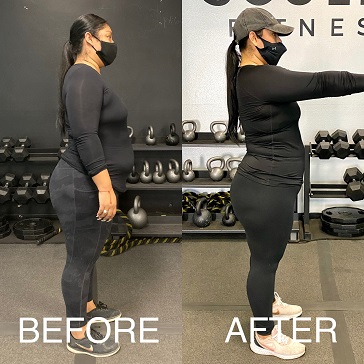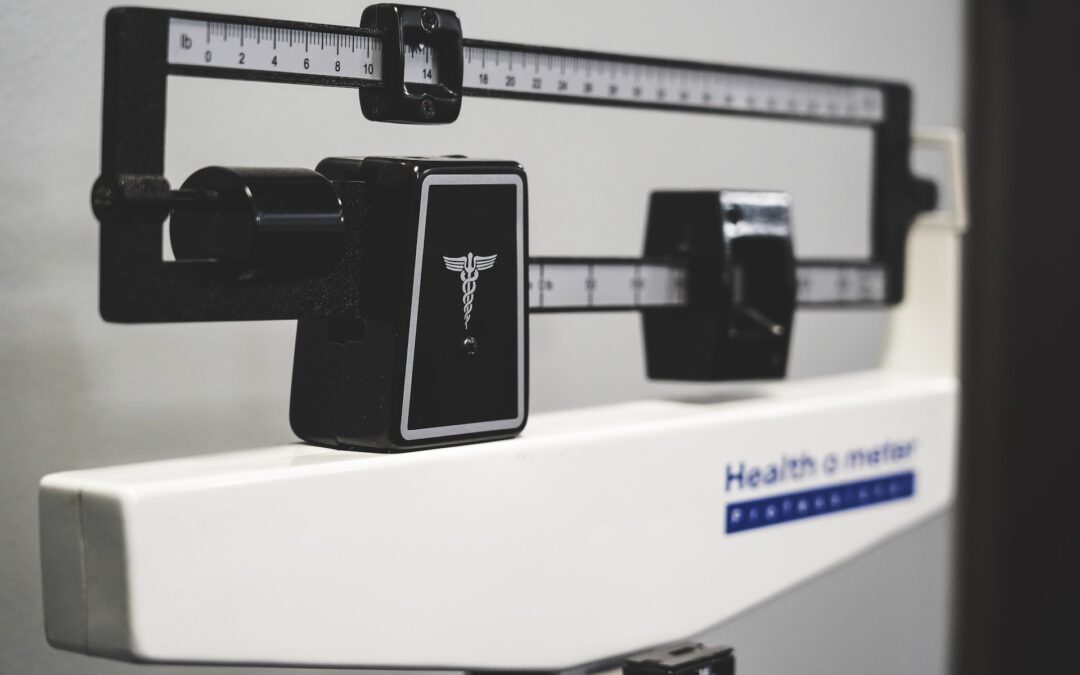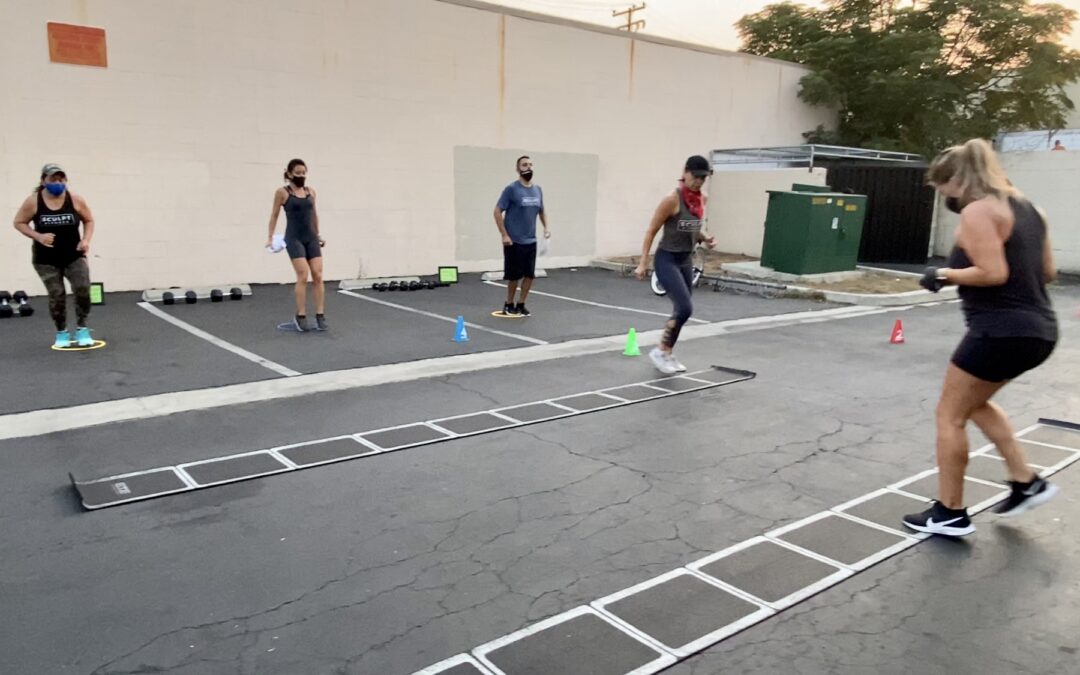
by David Minishian | Apr 25, 2023 | Fat Loss, Weight Loss
Losing weight can be a challenging journey, but it all boils down to one thing: burning fat. Understanding how your body burns fat can help you make informed decisions when it comes to your weight loss journey.
Here’s a breakdown of the science behind weight loss and how your body burns fat.
The Basics of Weight Loss
When you consume more calories than your body needs, the excess calories are stored as fat. To lose weight, you need to create a calorie deficit by consuming fewer calories than you burn. This can be achieved through diet and exercise, which help you burn more calories than you consume.
But how does your body burn fat exactly?
When your body needs energy, it first uses the glucose stored in your bloodstream and liver. Once those glucose stores are depleted, your body turns to its fat stores for energy. This process is called lipolysis.
The Science of Lipolysis
Lipolysis is the process of breaking down stored fat into free fatty acids and glycerol. These fatty acids are then transported to the liver, where they are converted into energy through a process called beta-oxidation.
This energy is used to fuel your body’s functions, including physical activity and basic bodily functions like breathing and circulation. The more energy your body needs, the more fat is burned.
The Role of Hormones in Fat Burning
Several hormones play a role in the fat burning process. One of the most important is insulin. When you eat, your body releases insulin to help transport glucose into your cells for energy. Insulin also promotes the storage of fat.
On the other hand, the hormone glucagon promotes the breakdown of fat stores for energy. When insulin levels are low, glucagon levels are high, and your body starts to burn fat for energy.
Another hormone that plays a role in fat burning is leptin. Leptin is produced by fat cells and helps regulate appetite and metabolism. When you lose weight, your leptin levels decrease, which can make it harder to continue losing weight.
Maximizing Fat Burning Through Diet and Exercise
While understanding the science behind fat burning is important, it’s also crucial to know how to maximize fat burning through diet and exercise.
When it comes to diet, focusing on whole, nutrient-dense foods can help keep you feeling full and satisfied while consuming fewer calories. Incorporating healthy fats, protein, and fiber into your meals can also help promote fat burning.
Exercise is also key for burning fat. Cardiovascular exercise like running, biking, or swimming can help you burn calories and increase your body’s demand for energy. Strength training can also help build muscle, which increases your body’s overall energy needs and can promote fat burning.
Weight loss is all about burning fat. Understanding how your body burns fat through lipolysis, hormones, and energy demand can help you make informed decisions when it comes to your diet and exercise routine. By creating a calorie deficit and focusing on nutrient-dense foods and exercise, you can maximize fat burning and achieve your weight loss goals.

by David Minishian | Jan 2, 2023 | Behaviors, Lifestyle Habits, Weight Loss
These 8 tricks to staying disciplined only work if you do them. My advice is to glance through them, then choose 1 or 2 that will work best for you. Actually, take time to consider which will make the biggest impact. I’ve also included either how to implement each one or why they are important.
I’ve seen people have more success with #7 than any other tip below. It’s my personal favorite.
1. Set Process Goals
Losing weight is no easy feat, and it requires discipline to stay on track. The best way to stay disciplined during your weight loss journey is to create clear goals that you can work towards. It’s important that these goals are realistic, measurable, and achievable, so you can objectively see your progress during your journey. For example, instead of saying “I want to lose 10 pounds in two weeks” try setting a process goal such as “I will walk for 30 minutes every day this week” or “I will eat five servings of fruits and vegetables each day this week.” Setting process goals like this will help keep you disciplined throughout your weight loss journey.
2. Track Your Progress
Tracking your progress along the way can be an effective tool in keeping yourself disciplined while on a weight loss journey. Tracking metrics such as body measurements (waist size), body fat percentage, daily caloric intake or weekly calorie deficit can help provide insight into how far you have come and how close you are to reaching your end goal. Keeping records of multiple metrics allows you to see progress in different areas. This is especially helpful if results take longer than expected! Additionally, tracking progress may reveal unhealthy habits that could be hindering success. Once you’ve identified these trends, you’ll be better equipped to create an action plan based on your needs.
3. Celebrate Small Wins
Losing weight isn’t always about the number on the scale; celebrating small wins along the way is important to stay disciplined and continue making healthier decisions consistently over time. These small consistent decisions ultimately lead towards bigger successes down the road! The small celebrations include things like eating breakfast everyday, not skipping meals, or meeting daily step count goals using a fitness tracker device. Whenever you feel like giving up, remember to celebrate the little victories. They add up big time in the long run!
4. Reward Yourself
Reward yourself after hitting certain milestones within your weight loss journey. Reaching long term goals is hard and rewards can help reinforce the habits you need to succeed. Even though food will likely be on your mind if you’re dieting, rewards do not necessarily have food related. Other ideas might include buying new workout clothes or planning a fun night out. The important part is that you choose something you’ll enjoy doing and receiving as a reward for the hard work put in!
5. Find Inspiration From Others
Craft your social media accounts to send you inspiration from others. Social media algorithms are powerful. By interacting with positive pages and posts that provide encouragement during your journey, the social media algorithms will continue to send you similar content. Finding accounts and individuals that share similar stories and experiences can provide the positive support you need to stay focused on your goal. You may glean useful information about how others overcame the similar challenges you’re facing. Creating an environment that drives your success is critical.
6. Make Exercise Fun
Exercising doesn’t have to be a boring chore you check off your daily list. Instead, plan to incorporate ways you enjoy moving. This can include regularly participating in a sport, joining a dance class, or taking yoga. Find creative ways to incorporate physical activity into your life. It’s recommended that resistance based training be the foundation of your exercise, but this recommendation isn’t exclusive to other types of movement. It’s more important to make exercise fun and find something you love.
7. Create A Support System
Creating a support system with family members or friends who understand what it takes to maintain healthy habits is key in staying disciplined while losing weight. Having people in your corner who cheer you on encourages better behavior choices, especially when those supporting you are familiar with the effort that goes into achieving success with the diet plan or exercise routine you’ve chosen. When someone else holds us accountable, it adds extra incentive when we need an extra push! Many gyms also offer group classes where people can go together and encourage one another during their workouts – providing both physical activity guidance from professionals plus social interaction which makes exercising more enjoyable overall! If you’re local to our facility, check out our Small Group Boot Camp or Semi-Private Training programs.
8. Stay Positive
Lastly, maintain a positive attitude throughout the entire process. You can expect to have ups and downs, but it’s essential to stay true to the plan you laid out from the beginning no matter the outcome. Even though your goal is weight loss, your success lies in your ability to maintain lifestyle changes long term. This is the real determinant of losing weight and keeping it off. Don’t let negative self-talk distract you, but remind yourself of the positive changes you’ve made thus far to prevent falling back to old behaviors and undoing all progress you’ve accomplished. Stay the course. You can do this!

by David Minishian | Dec 27, 2022 | Exercise, Lifestyle Habits, Nutrition, Sleep, Weight Loss
Long-term weight loss success is something that many of us strive for but don’t always achieve. It requires dedication, hard work, and a commitment to stay the course over an extended period of time. But if you want to make lasting changes in your health and body composition, it can be done by executing a few simple strategies.
Let’s cover 6 easy strategies for long-term weight loss success that you can start using today:
- Set realistic goals
- Track your progress
- Find healthy substitutes for unhealthy foods
- Exercise regularly
- Make lifestyle changes
- Get adequate sleep
1. Set Realistic Goals
The first step towards achieving any goal is setting realistic expectations from the beginning, so that you don’t become discouraged or overwhelmed by the process ahead of you. When it comes to losing weight, set yourself up for success by creating achievable objectives such as running three times per week or eating five servings of vegetables each day rather than aiming to lose 10 pounds in two weeks or completely eliminating carbs from your diet right away (unless advised by a doctor). Setting these types of actionable milestones will help keep you motivated while also making sure that the journey isn’t too overwhelming!
2. Track Your Progress
Keeping track of your progress helps keep things in perspective and gives you tangible evidence when reviewing how far you have come on your journey towards long-term weight loss success. You may find tracking apps helpful here; they allow users to log their meals/workouts along with other relevant details like calories consumed/burned etc. Having access to these data points can be useful for analysis later on down the line – all without having to manually record everything! Additionally, consider taking photos at regular intervals throughout this process so that once again there’s physical proof showing where you’ve been compared to where you are now. Pictures are great motivation during those more challenging moments!
3. Find Healthy Substitutes For Unhealthy Foods
One way people often sabotage their own efforts when attempting long-term weight loss is by failing to swap unhealthy habits with healthier alternatives – leading them back into their old ways eventually causing them to give up altogether! If there’s something specific out there which isn’t conducive towards one’s health & fitness goals, try finding suitable replacements instead (i.e. swapping sugary snacks like candy bars or chips with nuts/fruit). Doing this allows individuals to maintain variety within their diets while still adhering closely enough to the dietary guidelines they have set – ensuring longevity along this journey!
4. Exercise Regularly
Alongside consuming nutritious foods regularly, exercise plays an important role in achieving long term results when trying to reduce body fat. This doesn’t mean having to hit the gym every single day though; even just doing 30 minutes of intentional activity twice weekly combined with walking whenever possible is a fantastic start when done consistently over time. The goal is consistent activity to raise the metabolic rate and make it easier to remain in a caloric deficit. You don’t need to workout for 2 hours a day, 6 days a week to see results.
5. Make Lifestyle Changes
Losing body fat involves much more than simply exercising & eating well; changing lifestyle habits must occur in order to achieve the desired outcomes. This could include swapping screen time for family walks, eating out for home cooked meals, or alcohol for calorie free beverages. Of course, the changes all depend upon the individual situation, but the lifestyle habits need to change to properly support a leaner, fit person. Making gradual adjustments overtime will enable a person to adhere to the necessary measures required to increase their chances of having success!
6. Get Adequate Sleep
Finally getting sufficient rest is a critical component for maintaining good overall health. It’s important to pay attention to the amount of hours we’re sleeping at night when looking to shed a few extra pounds off! Not only does a lack of proper sleep lead to fatigue, but it increases cravings for sugar based products by affecting the hormones responsible for regulating hunger and satiety levels, both which play crucial roles in deciding whether someone ends up gaining or losing weight. Make sure to get plenty of shut eye whenever possible to ensure optimal functioning for the days ahead!

by David Minishian | Dec 22, 2022 | Nutrition, Weight Loss
What you eat has a huge impact on your health and wellbeing, but did you know that making only a few simple diet changes can have an incredible effect on how your body looks and feels – within just two weeks? Here are five simple modifications that could help you achieve seriously impressive results.
1. Reduce Sugar Intake
Reducing the amount of sugar in your diet is a quick and effective way to start seeing results. Studies show that high-sugar diets may lead to weight gain, poor skin health, energy crashes throughout the day, as well as an increased risk for diabetes and other serious illnesses. Aim to reduce added sugars from sources like cakes, cookies, soda and candy – instead try natural sweeteners such as honey or maple syrup in moderation where possible. If you have a craving you can’t resist, try opting for healthier alternatives such as fresh fruit or dark chocolate with at least 70% cocoa content.
2. Increase Protein Intake
Protein helps keep us feeling fuller for longer so it’s important that we get enough of it daily – especially if our goal is fat loss! This macronutrient also helps maintain and build muscle mass which will give our bodies a more toned look over time. Try adding lean proteins such as fish or chicken into meals alongside plenty of vegetables (you can even use them both together in a stir fry dish!). You may want to consider supplementing with protein shakes post workout if you’re not getting enough protein – these are available in many delicious flavors! If you don’t like the protein powder flavor, try mixing it into a fruit smoothie or shake.
3. Cut Out Refined Carbs
Refined carbs like white bread, pasta and crackers have had their nutrients like fiber stripped away during processing meaning they don’t offer much nutritional value compared to whole grain options. Without dietary fiber, they end up spiking blood sugar levels leading us to feel hungry again shortly after eating them – not ideal when trying to lose weight! Switching refined carbs out for whole grains such as quinoa or brown rice will provide more sustainable energy throughout the day while still allowing us to enjoy tasty meals.
4. Increase Water Consumption
We are made of 60% water. Our bodies need water more than anything else so it makes sense that hydrating should be a top priority – regardless of whether we want fat loss or not! Drinking plenty of water improves digestion, assists cardiovascular health, reduces fatigue, prevents headaches, boosts metabolism…the list goes on! Start by drinking 2 liters per day – this is easily achievable by carrying around a bottle with you wherever you go!
5. Add Healthy Fats To Meals
Healthy fats such as avocados, nuts and oily fish contain essential fatty acids which are necessary for many bodily functions including hormone production & absorption of vitamins A & D amongst others. Plus they taste great too – so why wouldn’t we include them?! Try adding avocado slices onto salads; nut butters onto toast/porridge bowls; salmon filets into a stir fry. Get creative with different flavor combinations until you find what you enjoy – healthy eating doesn’t have to be boring!
Making these five dietary changes may seem daunting at first but trust me when I say they’re worth sticking too because before long you’ll begin noticing positive physical transformations both inside & out! Not only will there be visible differences but internal ones too – improved mood due higher nutrient intake plus increased energy levels due lower sugar consumption means this new lifestyle change could really benefit overall wellbeing without sacrificing enjoyment along the way. Give yourself permission today, take charge of your health – remember it’s never too late to start living life better.

by David Minishian | Dec 11, 2022 | Exercise, Fat Loss, Lifestyle Habits, Nutrition, Sleep, Stress Management, Supplements, Weight Loss
Are you looking for ways to kickstart your metabolism and burn fat faster? If so, this article is for you. In this post, we’ll discuss seven easy-to-implement steps that can help get your metabolism up and running in no time. We’ll also share some tips on how to keep it going strong over the long haul. So let’s jump right in!
1. Increase Your Protein Intake
Protein is an essential nutrient that helps to build muscle mass and increase your metabolic rate. Studies have shown that people who consume higher amounts of protein tend to burn more calories than those who don’t eat as much protein. Aim for at least .5 gram of protein per pound of body weight each day. If you’re lifting weights, aim for 1 gram of protein per pound of lean body mass (you’ll need to know you’re body fat percentage to find your lean body mass). Good sources of protein include lean meats such as chicken breast or fish; eggs; dairy products like yogurt or cottage cheese; legumes like chickpeas or lentils; nuts and seeds; tofu; quinoa; tempeh; spirulina; etc.
2. Eat More Fiber-Rich Foods
Fiber helps keep you feeling full longer which can help prevent overeating and snacking between meals – both key factors when trying to lose weight. It also aids digestion by helping food move through the digestive tract slowly which can promote a healthy metabolism. Aim for 25–30 grams of fiber daily from foods such as fruits and vegetables, whole grains (such as oats), beans/legumes (like black beans), nuts/seeds (almonds and flaxseeds are great!), and avocados. Refined and processed foods lack fiber. To consume more fiber rich foods, a good general rule is to gravitate towards whole foods with minimal processing.
3. Stay Hydrated & Reduce Sugary Drinks
Drinking plenty of water throughout the day not only hydrates our cells but also helps with digestion. Being hydrated makes it easier for our bodies to absorb nutrients from food while eliminating toxins at the same time! As an added bonus: drinking enough water will help reduce strong cravings that are often thirst mistaken for hunger leading us down a path toward unhealthy snacks instead of healthier choices. Additionally try to reduce the consumption of sugary drinks like sodas which contain empty calories that won’t nourish our bodies. If soda is consumed regularly over time, this liquid candy will make it more difficult to lose fat and adds extra pounds onto our waistlines…not exactly what we want when trying to slim down.
4. Get Moving & Exercise Regularly
Regular exercise has been proven to not only boost one’s mood but also increases our metabolic rates over periods lasting anywhere from 24 to 72 hours after physical activity has taken place. This means even after having finished exercising there’s still benefit being gained simply because we’ve made exercise part of our weekly routine. As a bonus, if high intensity interval training (HIIT) workouts or resistance based training are used during these exercise sessions our metabolic rate increases significantly more. Moving consistently is the first goal, but the right type of exercise or training can maximize our efforts in terms of the time spent working out – it’s a win-win situation all around!
5. Prioritize Sleep Quality
Getting adequate sleep every night plays a major role in keeping hormones balanced, which helps regulate the appetite and reduces cravings associated with late night snacking binges. Individuals who suffer from a chronic lack of sleep often have unwanted weight gain despite the best intentions to move more and eat fewer calories. Aiming towards 7–9 hours of sleep nightly should be considered mandatory, especially considering how important quality restful sleep is towards overall health. With enough sleep a well rested body can more consistently maintain the positive eating habits that support a caloric deficit. This deficit is required to maximize the rate of fat loss!
6. Reduce Stress Levels
Finding ways to reduce stress levels may seem difficult at first; however there is a huge pay off in practicing stress reducing activities. Living in a state of constant stress promotes higher levels of cortisol. This hormone when chronically elevated can decrease our ability to lose fat. Not only does the hormone physically promote fat storage, but it can inhibit the mental clarity and the decision making ability required to stay on a diet plan resulting in half hearted attempts at staying the course. Luckily, a few simple mindfulness activities when practiced regularly can prevent a state of chronic stress so your body can continue being a fat burning machine. Deep breathing exercises are one proven method that is effective at recentering our body and mind. There are a variety of ways to practice deep breathing as seen in yoga, tai chi, and pilates, but the principle practice remains the same. Start by taking a deep breath in, holding it for 5 seconds, then slowly exhaling. Do this with your eyes closed paying attention to your body and breath. After only 10 repetitions this easy technique can significantly reduce stress and bring clarity back to your body and mind.
7. Supplement Smartly
Supplements aren’t required when creating a healthy lifestyle, but they may offer additional support depending upon individual needs. Whether it’s a protein powder, stimulant, creatine, probiotic, vitamin, mineral, or herb there may be a certain product or combination of products that prove beneficial. However, there are no supplements that should be applied to everyone. When determining if a supplement is right for you, consult your coach and medical team to ensure using the product will safely and effectively supplement your existing diet to help you meet your nutritional needs.

by David Minishian | Dec 2, 2022 | Fitness, Nutrition, Weight Loss
Plateauing is inevitable, but there are steps to beat it.
Remember when you started working out and how your body reacted. First, you had muscle soreness and fatigue, but after a couple months you saw your body composition change.
It’s a great feeling seeing the results.
But eventually the results will stop if you continually put the same amount of physical stress on your body.
Why?
Your body “gets used to it.”
When you feel you are not getting the best results from your workout, or you don’t see the numbers change in the direction you want them to — follow the guidelines below.
4 Steps to Overcome A Weight Loss Plateau
These suggestions will help you overcome the plateau and see more results:
- Add more daily physical activity
- Pay attention to your eating habits
- Progress your strength training routine
- Work with a coach to evaluate the next best steps
These are the basics. Let’s consider why.
1. Incorporating more movement will increase your caloric deficit. The bigger the deficit the more weight you’ll lose. Little things like taking walking breaks, parking further away from the entrance while running errands, or taking the stairs adds up. Look for the simple ways to move.
2. Overeating is the most common reason to plateau. As you lose weight, your Basal Metabolic Rate will decrease. This is the number of calories your body requires to live and breathe. This happens because you’re losing weight. This weight required calories. To account for this and stay in a caloric deficit, you need to gradually decrease the number of calories you eat. This may require paying closer attention to what and how much you eat.
3. By progressively increasing the difficulty of your workout routine, you are telling your body to adapt and change to overcome the new challenge. There are a couple ways to do this. You can lift heavier, do more repetitions, add an extra set, increase the exercise range of motion, or even add an extra workout to your week. These progressive changes will help you build more muscle and reduce your body fat percentage. Since these change also take more work and all work uses calories, you’ll increase your caloric deficit and lose more weight.
4. There may be nuanced reasons you aren’t losing weight. Sometimes these are reasons you aren’t seeing and others times you recognize them but are struggling to overcome them. If this is you, working with a professional may prove to be beneficial. Working with a coach will provide the accountability, support and guidance you need to start taking the right actions to reach your goals.
When you plateau, do not get discouraged. It happens to everyone!
Plateauing is your body’s way of saying I’m ready to take on harder challenges. There are many changes you can make to overcome a plateau and surpass the goals you set for yourself.
Make the right changes and results are bound to happen.





